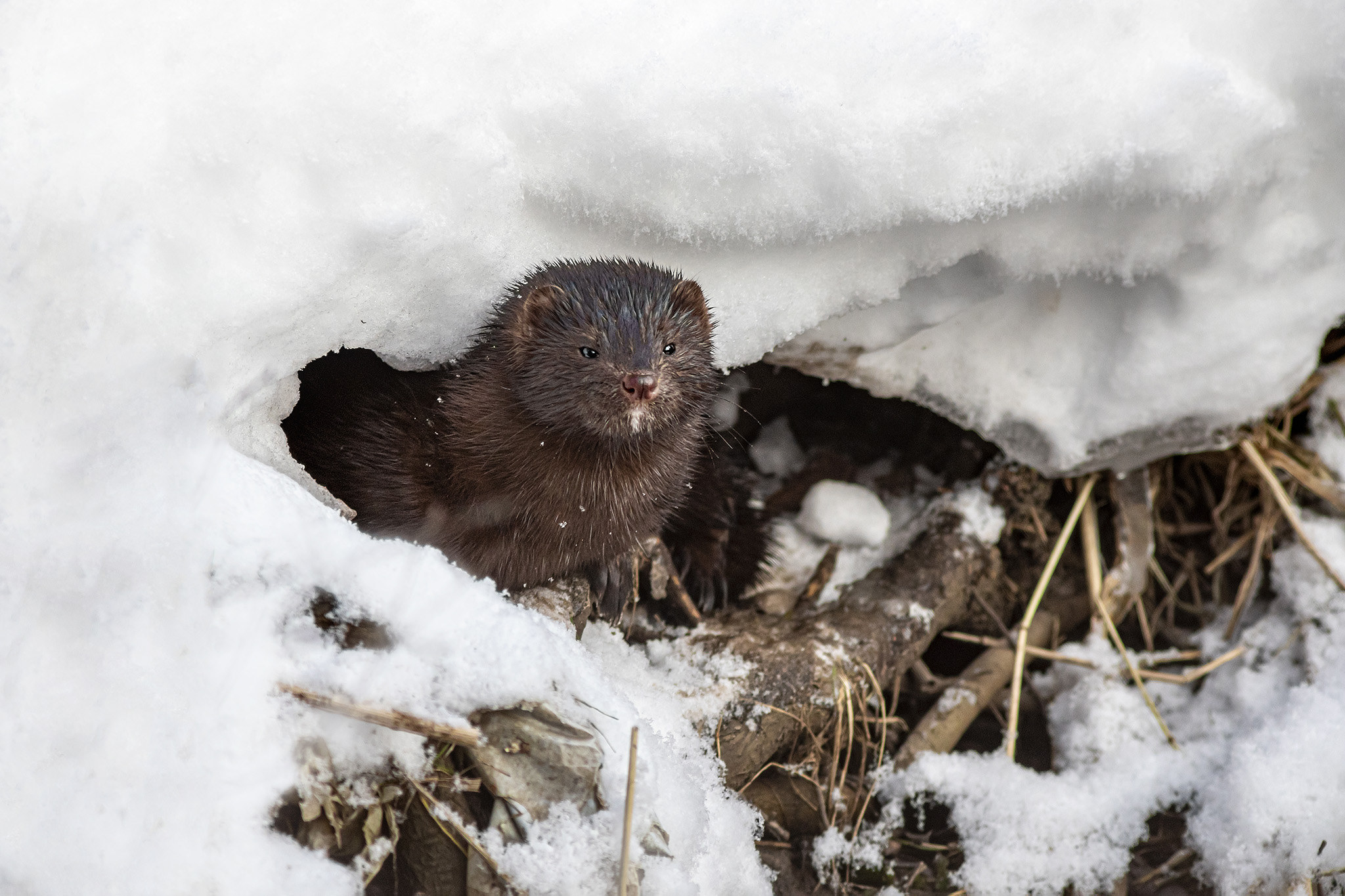The American mink (Neogale vison) is a semi-aquatic mammal native to North America. Here are some key points about the American mink:
- Physical Description: American minks are slender-bodied mammals with short legs and a long, bushy tail. They have glossy fur, usually dark brown in color, though variations exist. Their fur is highly valued in the fur trade. Minks have a characteristic white patch on their chin and throat.
- Habitat: American minks inhabit a variety of aquatic habitats, including streams, rivers, lakes, marshes, and coastal areas. They are also found in forested regions near water bodies. Minks are adaptable and can thrive in both freshwater and saltwater environments.
- Diet: Minks are carnivorous predators and primarily feed on a diet of fish, crustaceans, amphibians, small mammals, birds, and occasionally insects. They are skilled hunters and swimmers, using their keen sense of smell and sharp claws to catch prey both on land and in the water.
- Behavior: Minks are solitary animals and are primarily active during the early morning and evening hours, although they may be active at any time of day. They are excellent swimmers and spend much of their time hunting and foraging near water bodies. Minks are territorial animals and mark their territories with scent markings.
- Reproduction: American minks breed in late winter or early spring, with mating occurring from February to April. After a gestation period of around 40 days, females give birth to a litter of typically 4 to 6 kits, although litter sizes can vary. The kits are born blind and helpless, and they are cared for by the mother until they are old enough to hunt on their own.
- Conservation Status: While American mink populations are currently stable and not considered threatened, they face some threats such as habitat loss, pollution, and trapping for fur. In some regions, escaped or released captive minks have become invasive and pose a threat to native wildlife.
- Fur Farming: American minks are also bred in captivity for their fur, which is highly valued in the fashion industry. Mink farming is practiced in many countries around the world, including the United States, Canada, Denmark, China, and the Netherlands.
Overall, the American mink is an adaptable and resourceful carnivore that plays an important role in aquatic ecosystems as both a predator and a prey species. Efforts to conserve their habitats and manage their populations sustainably are essential for their long-term survival.
Views: 31
Subscribe to the newsletter:
